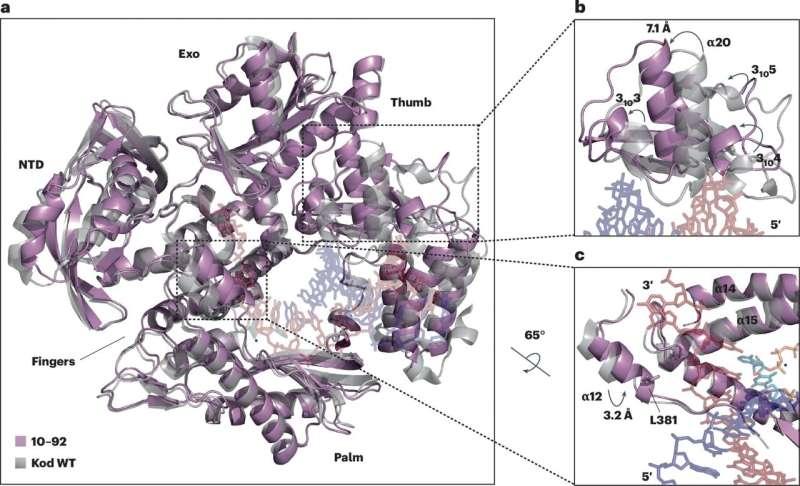Researchers have engineered a highly efficient enzyme that can produce synthetic genetic material called threose nucleic acid (TNA), a breakthrough that could lead to the development of more powerful and precise therapeutic options. This discovery opens up exciting possibilities in the field of synthetic biology and could have a transformative impact on the treatment of various diseases, including cancer, autoimmune disorders, metabolic diseases, and infectious diseases.

Revolutionizing Therapeutic Options with Artificial Genetic Material
The research team, led by the University of California, Irvine, has engineered an enzyme called 10-92 that can efficiently produce synthetic TNA, a genetic material that is inherently more stable than DNA. This breakthrough represents a significant milestone in the evolution of synthetic biology, as it brings us closer to the capability of natural DNA synthesis.
Unlike DNA, TNA’s biostability allows it to be used in a much broader range of treatments, opening up exciting possibilities for new therapeutic applications. The 10-92 TNA polymerase, which facilitates the development of future TNA drugs, is a crucial step forward in narrowing the performance gap between natural and artificial enzyme systems. This achievement could lead to the creation of “drugs of the future” that look very different from the ones we use today, potentially addressing the limitations of current treatments.
Advancing the Frontiers of Biotechnology and Healthcare
The importance of this discovery extends beyond its immediate impact on therapeutic development. DNA polymerases, the enzymes that replicate organisms’ genomes, play vital roles in biotechnology and healthcare, as witnessed in the fight against COVID-19. These enzymes were crucial to pathogen detection and the eventual development of the mRNA vaccine.
Similarly, the 10-92 TNA polymerase represents a major milestone in the field of biotechnology. It opens up new possibilities for the creation of therapeutic aptamers, a promising drug class that binds to target molecules with high specificity. These aptamers have the potential to address the limitations of antibodies, such as improved tissue penetration, and could have an even greater positive impact on human health.
Unlocking the Potential of Synthetic Genetic Material
The team’s achievement in engineering the 10-92 TNA polymerase was no easy feat. They employed a technique called homologous recombination, which rearranges polymerase fragments from related species of archaebacteria, to create this highly efficient enzyme. Through repeated cycles of evolution, the researchers identified polymerase variants with increasing activity, ultimately resulting in a variant that’s within the range of natural enzymes.
This accomplishment represents a significant step forward in the field of genetic engineering and opens up exciting possibilities for the future. By facilitating the discovery of new approaches, the 10-92 TNA polymerase could lead to more powerful, precise, and effective therapies, ultimately transforming the way we treat a wide range of diseases and improving the overall well-being of individuals worldwide.
